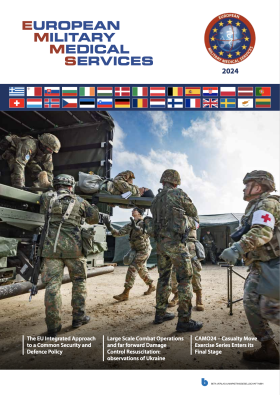
Article: PD Dr. Krüger
Dengue Fever: Vectors (Entomology)
Dengue (DEN) viruses are obligate arboviruses and are exclusively transmitted by mosquitoes of the Aedes species.
2. Vectors (Entomology)
Dengue (DEN) viruses are obligate arboviruses and are exclusively transmitted by mosquitoes of the Aedes species. The type with the largest transmission potential is the so-called yellow fever mosquito Aedes aegypti, which today is preferably called the African tiger mosquito. The Asian tiger mosquito Aedes albopictus is also considered to be a secondary vector. The two species can be distinguished by their different white thorax marking.
From the human medicine perspective, the repeated and continuing spread and transmission of Ae. aegypti has resulted in one of the most far-reaching and sustained biological invasions ever. If one disregards for a moment the pronounced anthopophilia (predilection for humans) of this mosquito, which makes it an unpleasant plague pathogen, one has to emphasise another characteristic above all. Due to the fact that Ae. aegypti is active during the daytime, even bed nets such as those recommended against malaria mosquitoes do not offer any protection. Even though one can successfully combat Ae. aegypti successfully with insecticides (although it is very hard to eradicate them!), the emphasis has to be on the word 'can', since in practice this form of vector control has often proved to be very difficult, if not impossible. Once Ae. aegypti has become established, getting it under control in today's tropical cities such as Rio de Janeiro or Lagos with their sprawling slums and unresolved problems with waste – and in view of the extensive amount of international trade and freight transport – is an almost insoluble task. Every coke can filled with rainwater or flower vases in cemeteries offer Ae. aegypti optimum breeding conditions.
After malaria, DEN fever is considered today to be one of the most important diseases transmitted by mosquitoes. The DEN virus does not have a mammalian reservoir, although in Africa and Malaysia isolated cases of individually infected monkeys have been found. Vectors which play a role in the spread of the disease include not only Ae. aegypti*, but also other species such as Ae. polynesiensis*, Ae. scutellaris*, Ae. albopictus* and Ae. niveus in the Asia-Pacific region and Ae. furcifer, Ae. taylori, Ae. luteocephalus*, Ae. opok* and Ae. africanus* in West Africa (* = subgenus Stegomyia).
Due to its worldwide occurrence, it is particularly easy to determine using the example of DEN how the spread of the vector and virus are correlated. It is evident that there is a climatic dependency for both which relates mainly to the humid tropical regions of America, Africa, Asia and the Pacific.
However, regions with a low risk also extend into temperate latitudes, where Ae. aegypti was at least periodically indigenous, is indigenous again or could become so. More than 1 million cases of people with DEN were registered in Greece in 1928, of whom over 1,000 died, and until the middle of the last century Ae. aegypti had virtually spread throughout the entire Mediterranean region south of the 12.8°C annual isotherm. As a result of the virus becoming established again in Madeira, the first DEN outbreak in Europe for almost 100 years occurred at the end of 2012, with approximately 2,000 people being infected [Sousa et al., 2012].
From the above facts it is obvious that for deployments in the endemic area, the relevance for military medicine is exceptionally high [Gibbons et al., 2012]. In particular, the fact that the mosquitoes are active during the daytime, so that bed nets are ineffective, results in a high risk of infection. Suitable protective measures as part of exposure prophylaxis are the wearing of long clothes and footwear which are impermeable to mosquito bites and impregnated with insecticide if possible (tiger mosquitoes prefer to bite in the area of the feet and ankles) and the use of repellents on the skin [Morwinsky, 2005]
As part of interdisciplinary "Force Health Protection" it also pays off to ensure appropriate camp hygiene which reduces the vector pressure, whereby potential mosquito breeding grounds, i.e. any form of water accumulation, are avoided or regularly removed. Continuous specialist monitoring of the vector population by means of appropriate mosquito traps (live traps with scented bait for blood-sucking female mosquitoes; ovitraps for pregnant females) provides valuable information in the endemic area on the population dynamics of the mosquitoes and can serve as an early warning system. In acute outbreaks, insecticidal vector control can be considered in close cooperation with local authorities.
Bibliography:
Gibbons RV, Streitz M, Babina T, Fried JR. Dengue and US military operations from the Spanish-American war through today. EID 2012; 18: 623-630.
Morwinsky M. Medical Entomology – One Column of Force Protection in Military Missions. Wehrmedizin und Wehrpharmazie 2005; 2: 40-41.
Sousa CA, Clairouin M, Seixas G, Viveiros B, Novo MT, Silva AC, Escoval MT, Economopoulou A. Ongoing outbreak of dengue type 1 in the Autonomous Region of Madeira, Portugal: preliminary report. Euro Surveill 2012; 17: 8-11.
PD Dr. Krüger
Date: 11/06/2017










